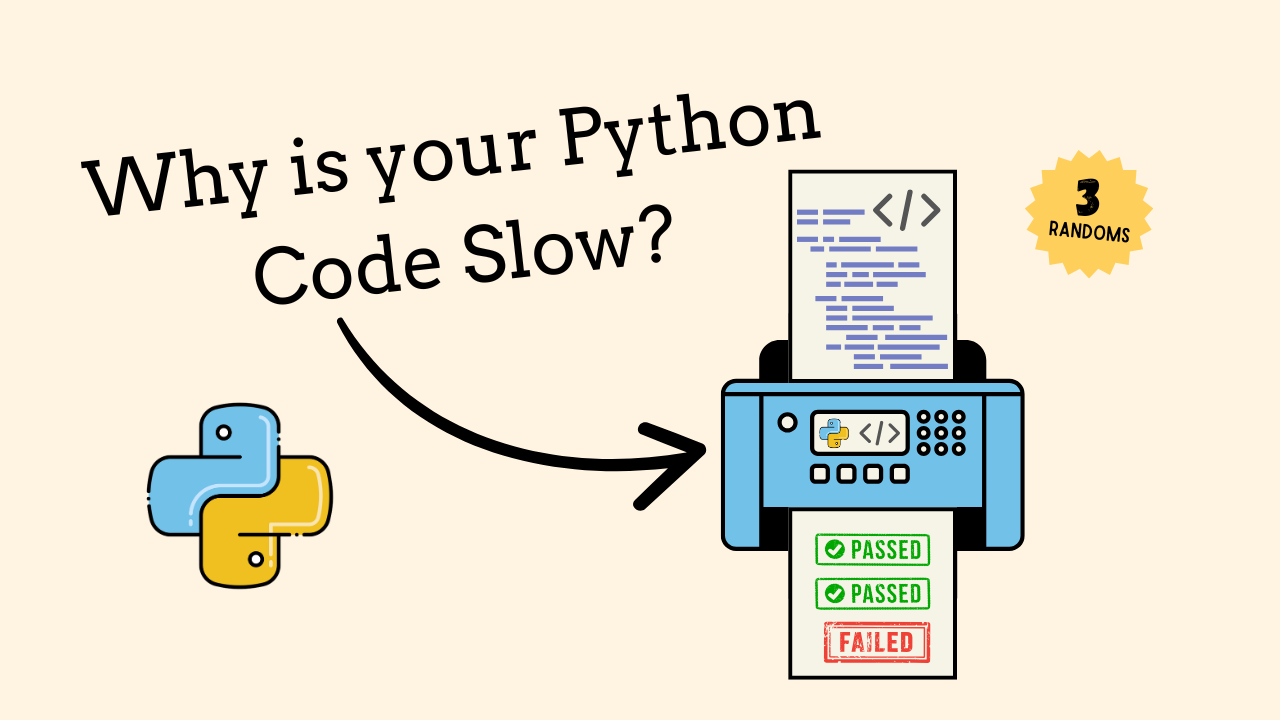Why Your Python Code Is Slow (And How Pyinstrument Instantly Fixes It)
See how to instantly find and fix slow Python code using Pyinstrument—an easy-to-use profiler that shows exactly where your scripts are wasting time.
Python’s supposed to be fast, right? But sometimes, your code just drags. You run something and then sit there waiting, thinking, “Why is this taking forever?”
That’s exactly when you want something like Pyinstrument. It’s a tool that shows you where your code is spending time, so instead of guessing, you actually know what’s slowing things down.
Pyinstrument is like a stopwatch for your code that runs behind the scenes. It keeps track of what functions take the longest, and when it’s done, it gives you a super simple breakdown that’s actually easy to read.
Welcome to Pyinstrument. Check out other 3 Random Articles here.
Imagine you're subscribed to a newsletter called 3 Randoms. Each week, it introduces you to three lesser-known Python tools that can make your coding better. It's like expanding your toolbox and discovering new tricks.
You’ll be able to see which parts are slow, how much time each part took, and what was called when. No digging through giant reports or getting lost in the details. It just shows you what matters.
I often just toss in a bunch of print() statements or just go off gut feeling to figure out what was wrong. It’s messy and honestly doesn’t help much. Do this also sound like you?
But now, anytime my script feels a little sluggish, we could just run it through Pyinstrument. It saves me a ton of time, whether I’m building an API, analyzing data, or running something heavy in the background.
In this article, I’ll walk you through getting Pyinstrument set up, how to use it on your script, and how to read what it tells you so you can actually make things faster. It’s quick to learn, and once you try it, you’ll wish you had found it sooner.
Alright, first things first — to install it, just run:
pip3 install pyinstrument👉 Thank you for allowing me to continue to do work that I find meaningful. This is my full time job so I hope you will support my work.
My premium readers get access to so much more, like monthly Python projects, in-depth weekly articles, this here '3 Randoms' series, and my complete archive!
👉 If you get value from my work, please leave it a ❤️ and share it. This helps more people discover this newsletter, which helps me out immensely!
Once that’s done, I’ll show you three simple but powerful ways to use it. Let’s speed up your code, one step at a time.




